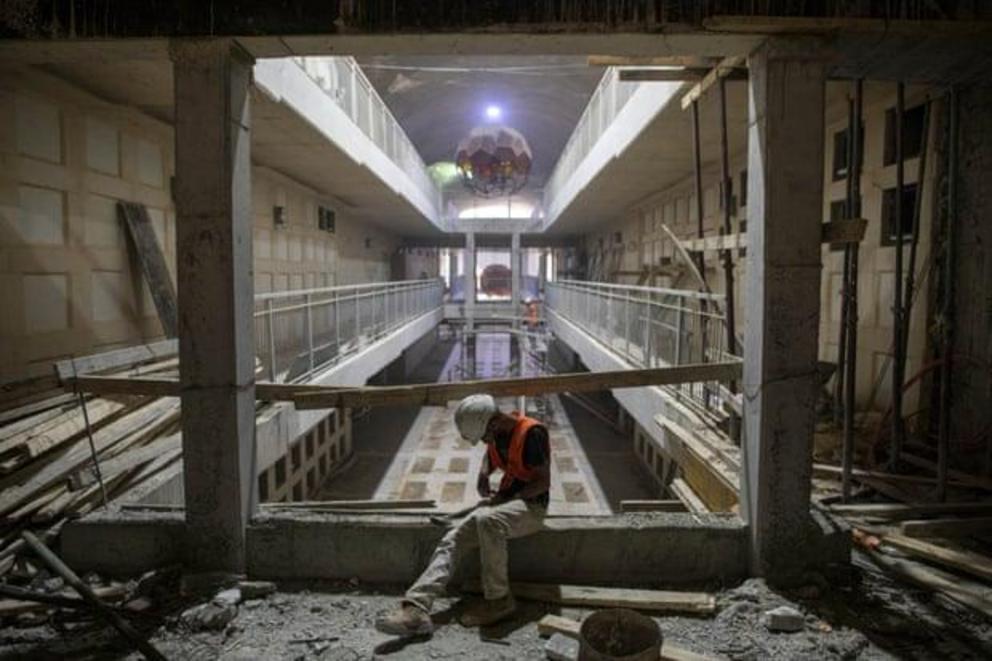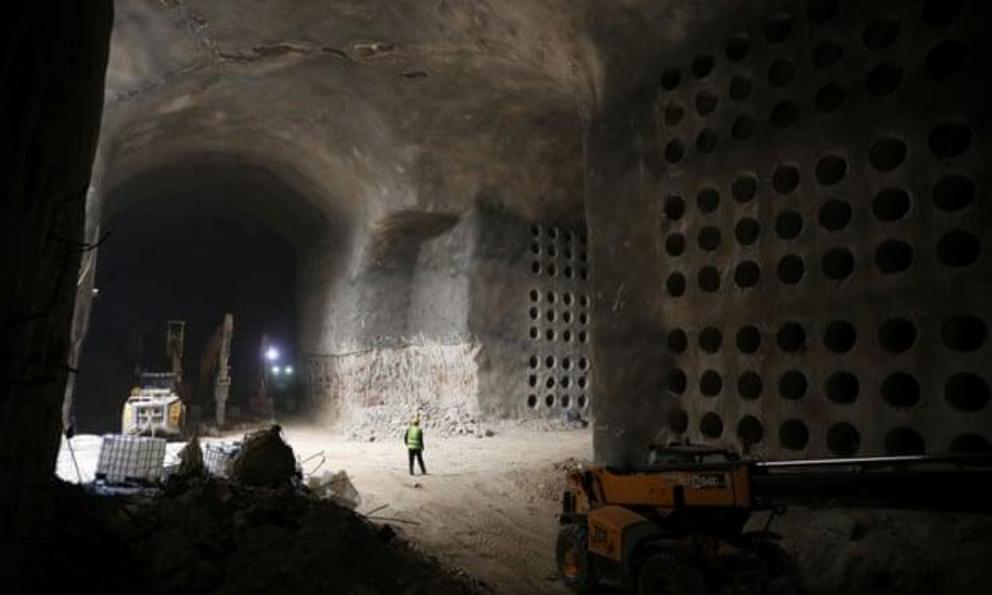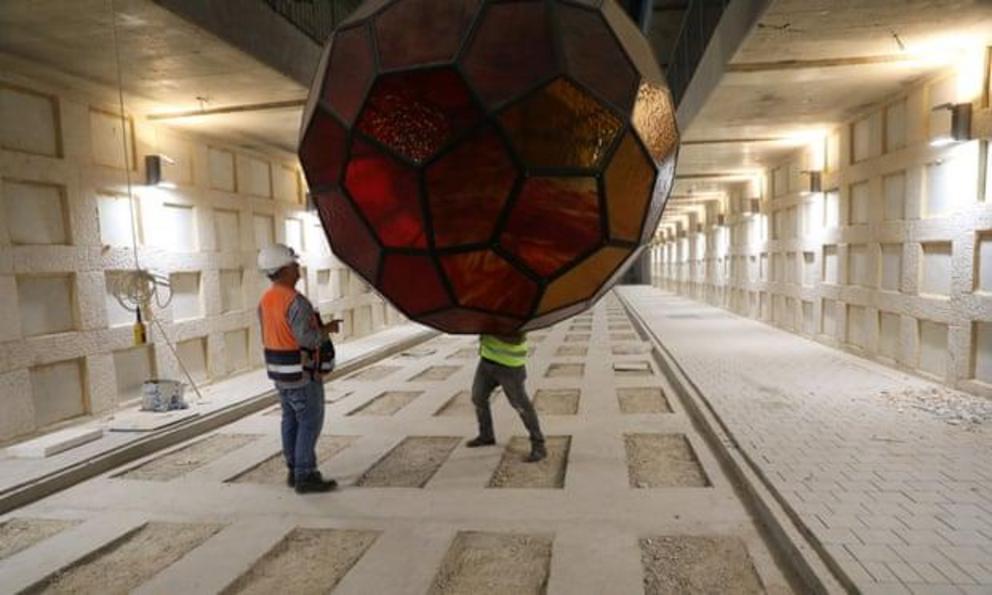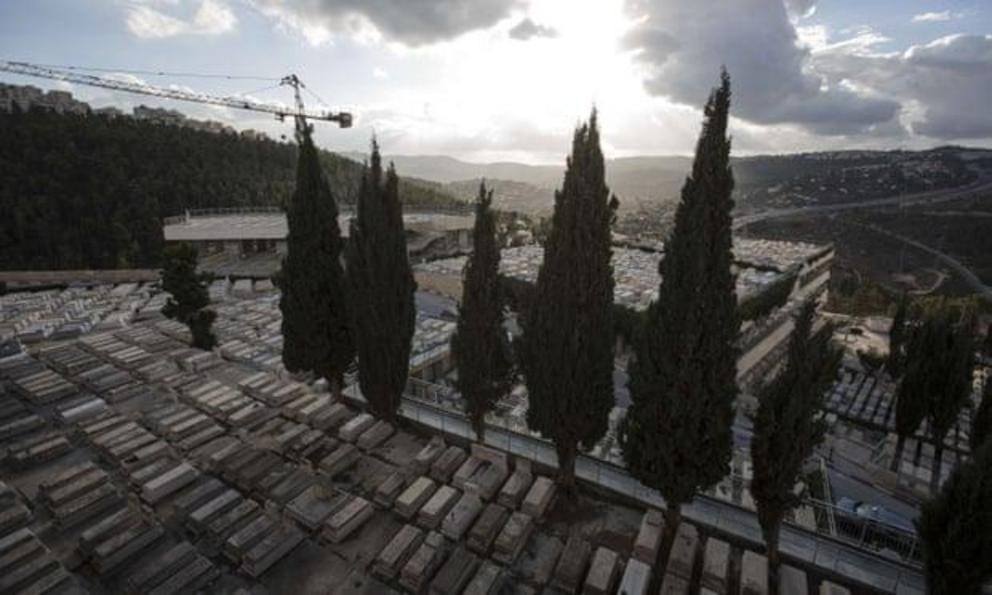The future of burial: inside Jerusalem's hi-tech underground necropolis
The new necropolis has been built to accommodate 23,000 bodies.
With a dire shortage of land for graves, the holy city is reviving an ancient custom of underground burial – with lift access, LED lighting and golf buggies.
Cool air from deep inside the mountain lightly wafts through cavernous arched tunnels. Along the walls of the subterranean passages, rows of human-sized chambers have been dug into the rock. It is unmistakably a catacomb.
Yet this mass tomb is not a relic of the Roman empire. It was made with huge electric diggers, and the walls are lined with concrete. People will enter by lift, and those with limited mobility will be able to use a golf buggy to traverse the necropolis.
Facing a dire shortage of land, the city of Jerusalem is preparing at the end of this month to revive an ancient custom of underground burial. A four-year project has dug out a mile of labyrinthine tunnels into a hillside on the outskirts of the holy city to accommodate 23,000 bodies.
 The underground cemetery construction site in August 2019.
The underground cemetery construction site in August 2019.
“What you are seeing here is the first underground cemetery of the new era,” said Adi Alphandary, head of business development at Rolzur, the Israeli construction company leading the project.
The firm specialises in digging tunnels, typically for trains or roads. Its client for this project, however, has more spiritual demands.
The Kehillat Yerushalayim burial society, the biggest group overseeing Jewish burials in Jerusalem, has financed the project, which cost upwards of £45m. It has strict rules, including a ban on cremation and also that the deceased be physically connected to the earth, allowing their bodies to return to the ground.
For that, Rolzur kept the number of graves down to those that can line the walls and floor that touch the earth. Where it has used concrete to fortify the chambers, it left holes in the sides to make sure there is always a direct link to the dolomite bedrock.
 Construction work continues in October 2019 as the cemetery’s opening date approaches.
Construction work continues in October 2019 as the cemetery’s opening date approaches.
Walking around the underground “streets” in a hard hat and high-visibility vest, Alphandary says there is another unusual design challenge for this project: “How do you make it look like a serene place?”
Soft LED lighting lines the austere passages, some of which are 15 metres high and can accommodate nine levels of burial niches along each side. The only colourful flourish comes from the amber glow of giant stained-glass lights that dangle at intersections between the underground avenues, the work of German artist Yvelle Gabriel.
The 30 October inauguration will open just the first third of the complex, with 8,000 graves ready to be filled, while the rest of the tunnels will continue to be dug. Funerals are expected to begin in November. Workers on cranes with spotlights were rushing this week to install two-metre-diameter ventilation pipes that will pump air in and out of the caverns.
 Labourers work with one of the Yvelle Gabriel-designed light fixtures as the cemetery’s opening date approaches.
Labourers work with one of the Yvelle Gabriel-designed light fixtures as the cemetery’s opening date approaches.
In Jerusalem, and across Israel, full-to-capacity graveyards have already closed their gates to new burials. Non-Jews are buried in separate cemeteries.
Moving the dead underground is an idea Rolzur wants to take worldwide, as growing cities have sprawled out to engulf cemeteries that were previously on the outskirts. The space later becomes unusable, as many graves lie unvisited.
“You get these huge metropolitans with lifeless islands in between them,” said Alphandary. “We see this dilemma all over the world.”
The Jerusalem catacombs are directly beneath the city’s biggest Jewish cemetery, Givat Shaul, which is quickly running out of space. It has nearly 250,000 graves and has had to build multi-storey burial structures that look like car parks.
 Givat Shaul cemetery, which has had to build multi-storey burial structures to deal with overcrowding.
Givat Shaul cemetery, which has had to build multi-storey burial structures to deal with overcrowding.
In contrast, the catacombs take up no existing land. “Our plan is 50 metres below existing graveyard,” said Alphandary. “We are, in a way, creating new grounds for burial.”
The current project has taken up just 5% of the available space in the mountain, and that is just at one level.
“Let’s think a bit further,” he said. “Let’s say a hundred years from now all these graves will be filled. All we have to do is go another 50 metres below and we are potentially ready for another 20 times what we’ve done here.
“Don’t waste the upper area for things you can do underground.”

